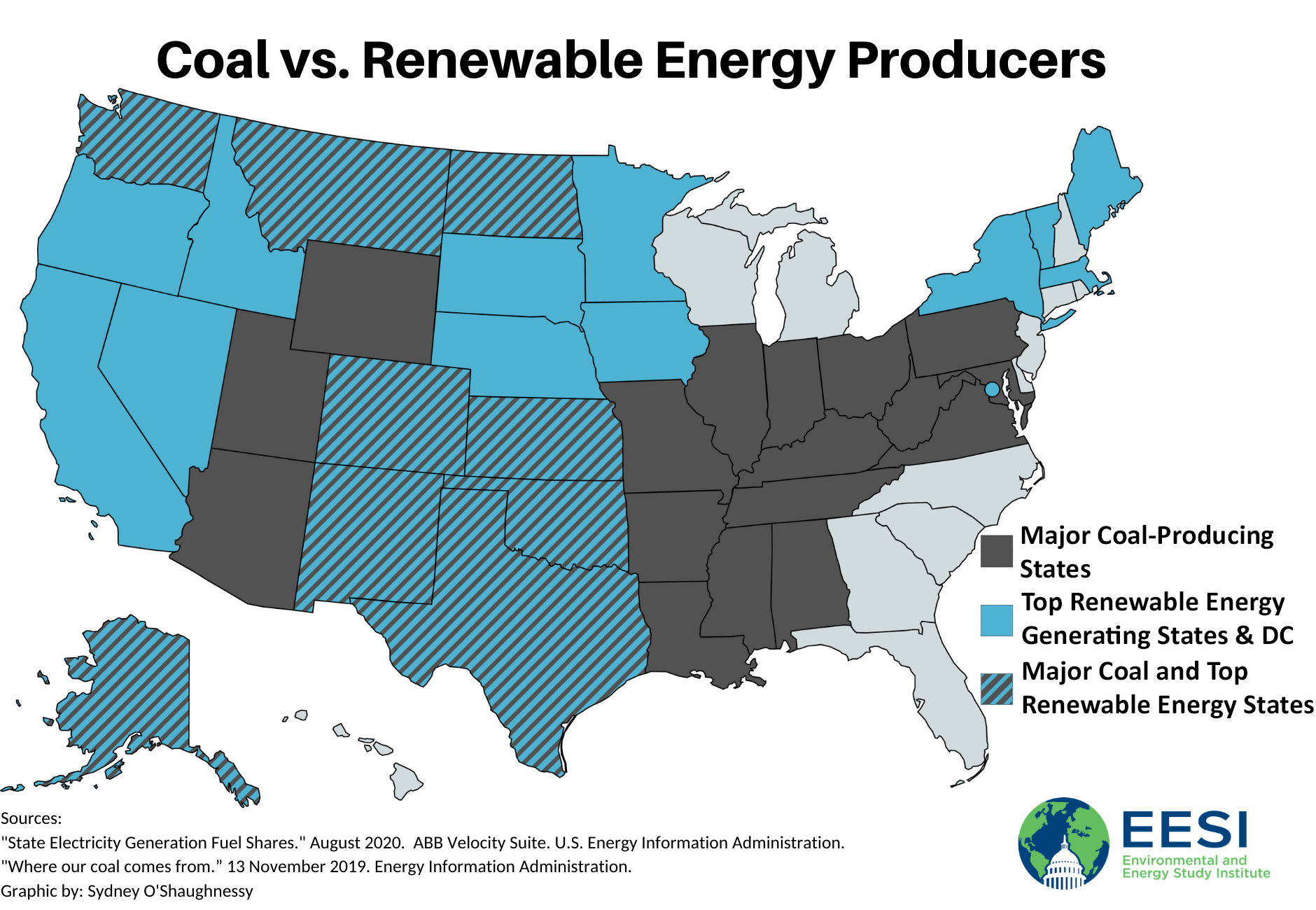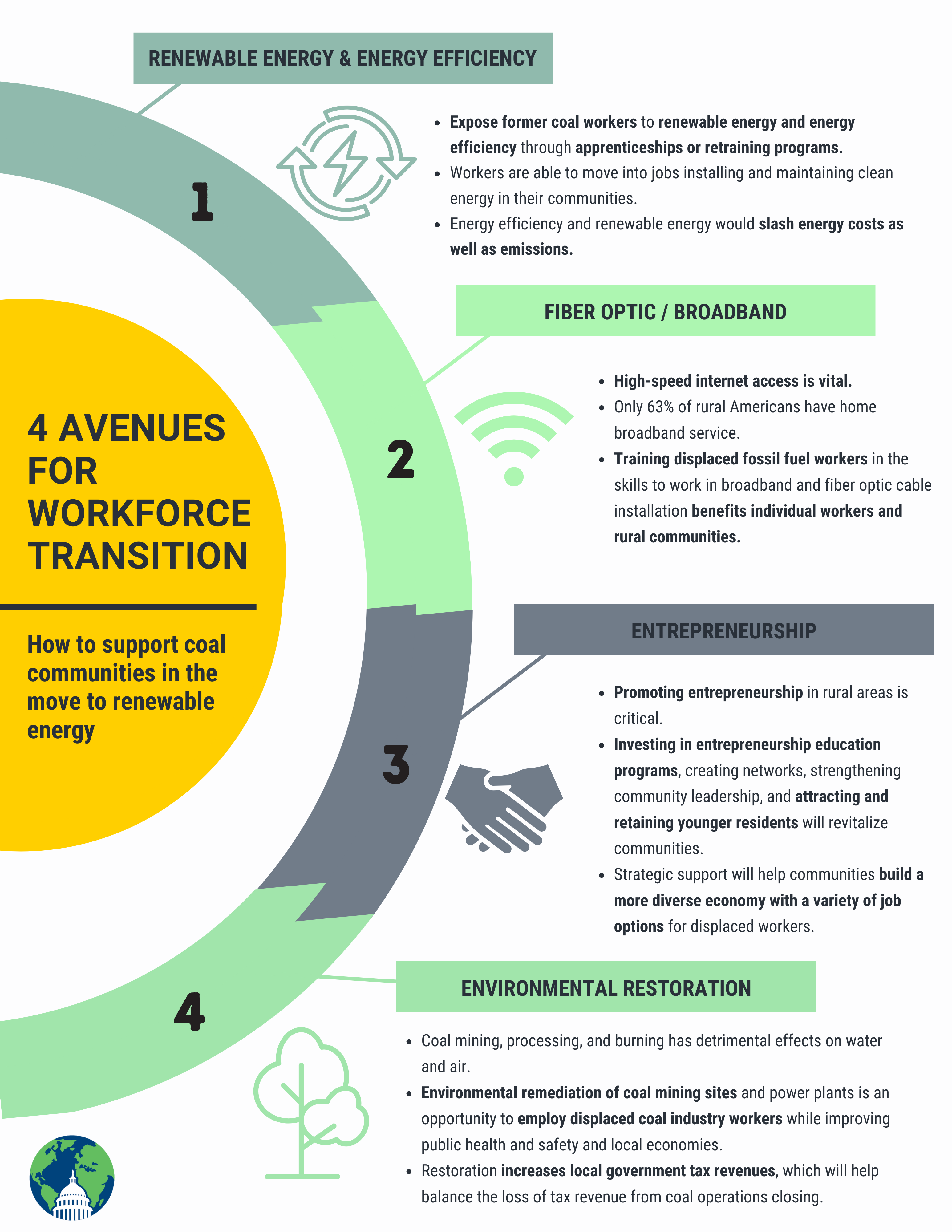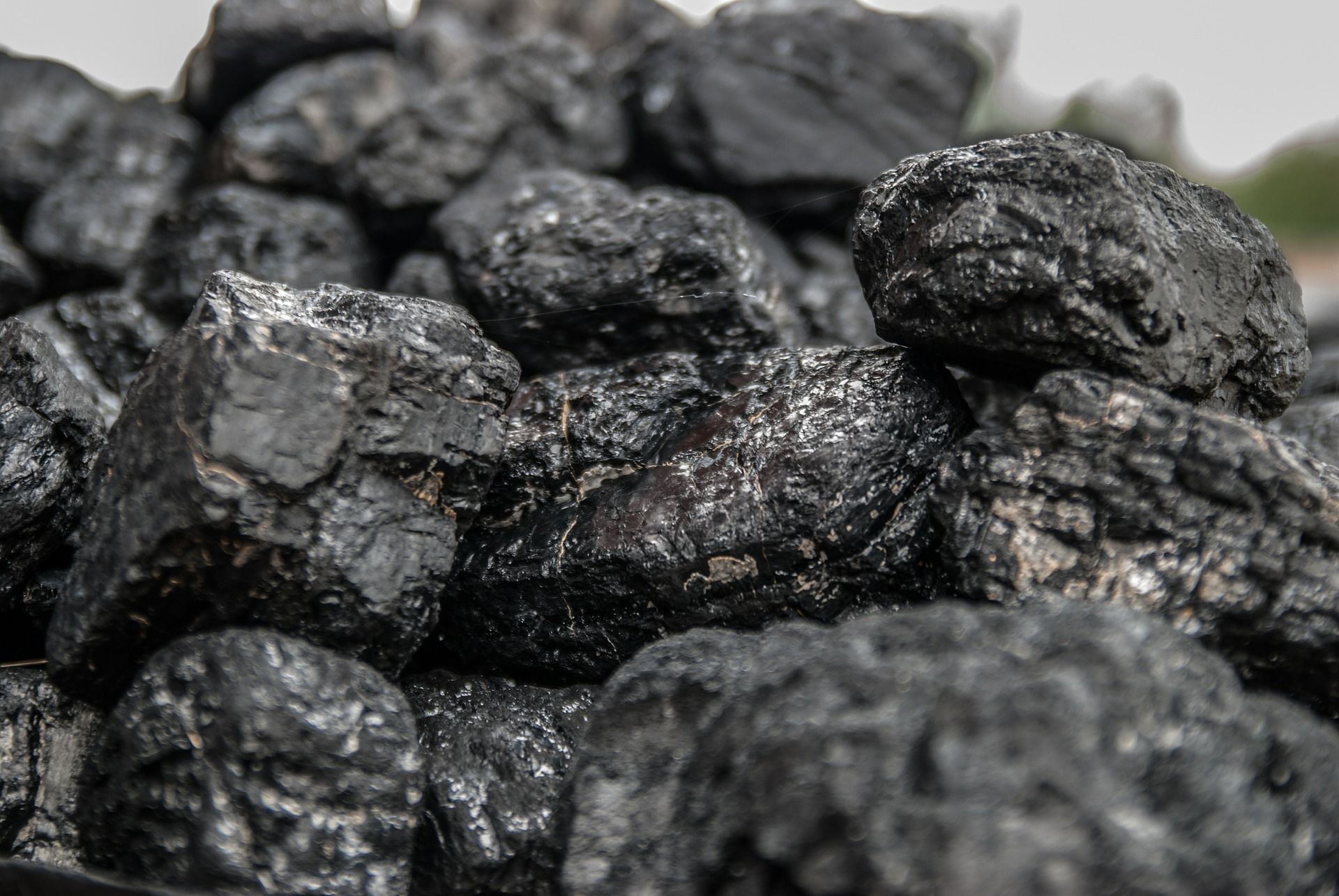Other than mining and reclamation describe two environmental impacts of using coal for energy. As time goes by the air pollution also contributes to change in the climate creating more temperature extremes particularly in terms of heat waves.

Issue Brief How Coal Country Can Adapt To The Energy Transition White Papers Eesi
The availability of coal makes it very affordable.

. Another environmental impact is environmental degradation associated with the transportation of coal. One environmental impact for using coal as energy is wet or dry acidic deposition caused by oxides of nitrogen or sulfur resulting from combustion. Pollution caused by emissions of contaminants such as sulfur dioxide nitrogen oxides and mercury which affects human and environmental health.
Is likely to increase. All energy sources have some impact on our environment. Explain why per capita coal consumption in the US.
Between 2002 and 2018 275 of the 530 US. Increasing our use of coal would increase concern over several environmental issues. C Describe one environmental impact that the sulfur content of the remaining coal and the tailings would have on the reclamation process and suggest a possible remedy.
This has impacts for the health of humans other animals and plants. The Environmental Impacts of Coal A toxic industry Coal is the dirtiest of all fuels. Coal plants were shut down or converted to natural gas Richardson et al 2017.
Mining and using coal for power significantly impacts the environment causing pollution of the air water table and the ground. The environmental impacts of coal. This limits the amount of a capital investment which is required to create a new societal resource especially when compared to nuclear or renewable energy resources.
Thermal pollution and fallout of heavy metals such as mercury and arsenic released during combustion. Greenhouse gases emissions of which contribute to global warming. It can be converted into different forms of fuel.
However renewable sources such as wind solar. Coal offers a rather low capital investment. Fossil fuelscoal oil and natural gasdo substantially more harm than renewable energy sources by most measures including air and water pollution damage to public health wildlife and habitat loss water use land use and global warming emissions.
It is responsible for producing pollution such as ash sludge slurry arsenic mercury uranium and other heavy metals that pollute the air and waterways. Environmental Impacts of Coal According to researchers Armstrong Menon 1998 coal is a major energy source constituting 25 of energy consumption worldwide 21 in the United States and 40 of electricity generation worldwide 45 in the United States. Many of our fuel and power generation technologies are already designed to use coal.
D Other than mining and reclamation describe TWO environmental impacts of using coal for energy. The environmental impact from surface mining includes habitat destruction and loss of biodiversity soil erosion groundwater pollution and air pollution caused by dust particulates. Two main environmental concerns associated with the use of coal are.
There is no lag time with coal energy. Coal and fuel oil combustion emit fly ash particles into the atmosphere which contribute to air pollution problems. The energy infrastructure supports coal.
From mining to coal cleaning from transportation to electricity generation to disposal coal releases numerous toxic pollutants into the air water and land. Content is available under Creative Commons Attribution-NonCommercial-ShareAlike. Some cause cancer others damage the nervous.
It devastates the surrounding environment. Air pollution from coal-fired power plants is linked with asthma cancer heart and lung ailments neurological problems acid rain global warming and other severe environmental and public health impacts. The Pros of Coal Energy.
This page was last edited on 15 January 2020 at 1438. Effects of coal mining on the environment pretty serious Environmentally damaging surface mining methods have overtaken underground mining as the predominant way of extracting coal. From mining to coal cleaning from transportation to electricity generation to disposal coal releases numerous toxic pollutants into the air water and land.
Impacts of coal and the development of energy resources. SourceWatch is a project of the Center for Media and Democracy CMD. Various facets of coal science the environmental and human health.
These disrupt ecosystems and. These types of damage for the environment mean that even though coal is cheap to mine and. The aging infrastructure of coal fired power plants is another factor resulting in closures.
The coal industry has a significantly negative environmental impact on the land water and air. Coal is the dirtiest of all fuels. Clean coal technologies help to limit the emissions that are released.
Environmental impacts associated with using coal as an energy source are particulate emission ground level ozone smog and acid rain. Trabish 2018 with plans to retire additional plants by 2030 Richardson et al 2017Most coal plants in the United States were built before 1990 US. Coal accounts for 40 of anthropogenic CO2 emissions and is therefore a major contributor to climate change.
Increased per capita demand for energy is connected to an increased demand for coal because. The cost of coal is quite cheap. Just like nuclear energy generation it releases huge amounts of radiation into the environment.
These disrupt ecosystems and endanger human health. It is non-renewable and therefore there is a finite supply of coal.

Issue Brief How Coal Country Can Adapt To The Energy Transition White Papers Eesi

Coal Fired Plants Pros And Cons Bright Hub Engineering

0 Comments